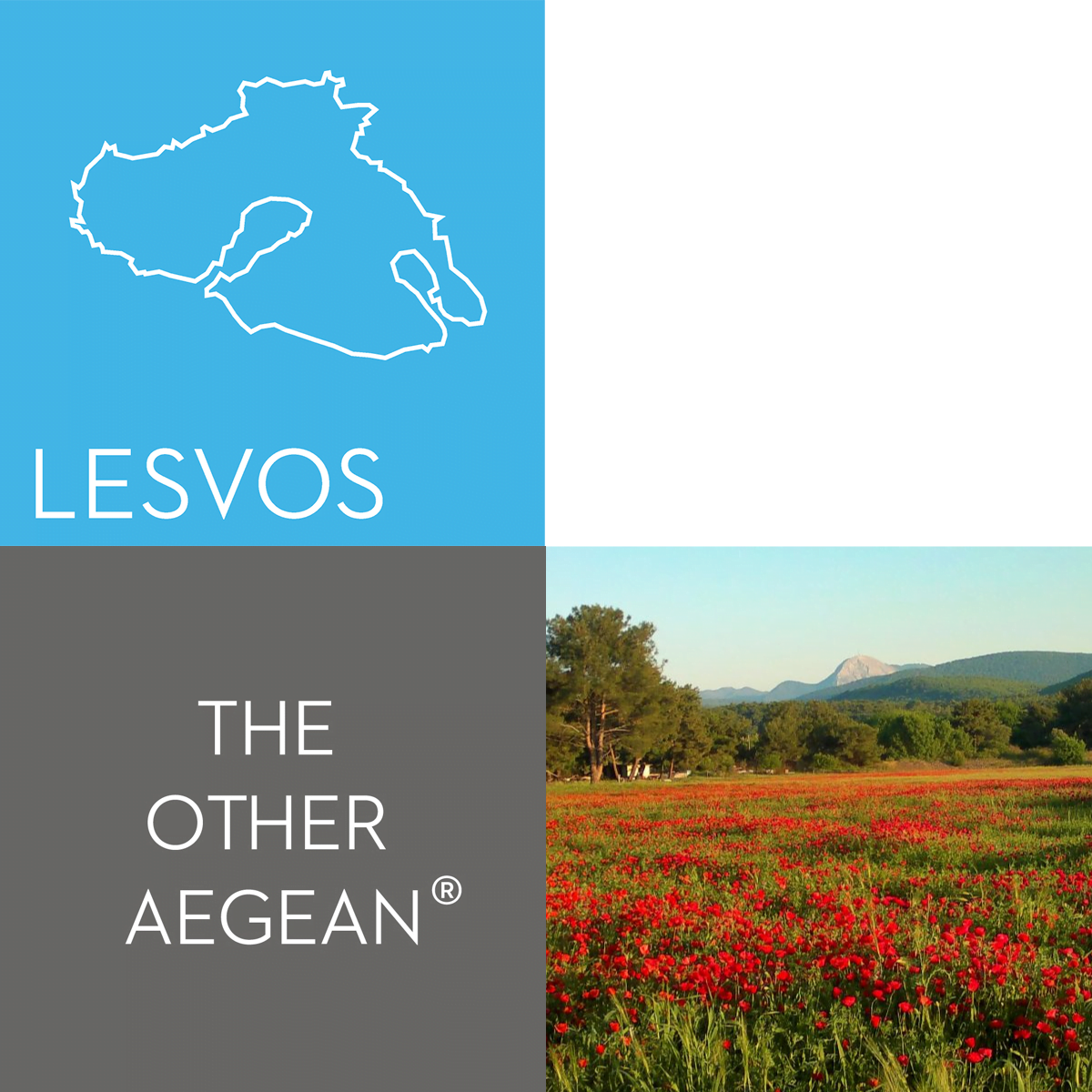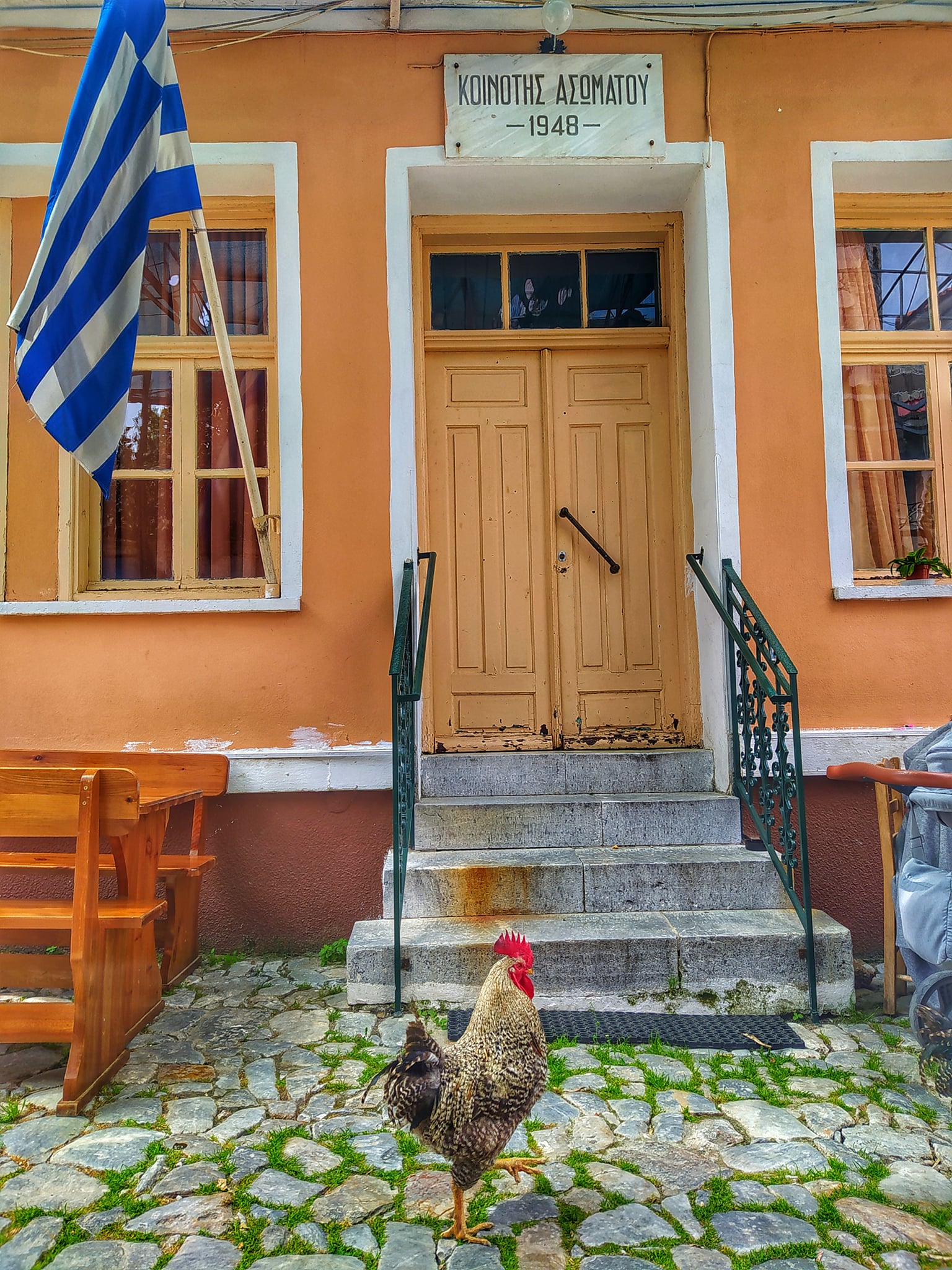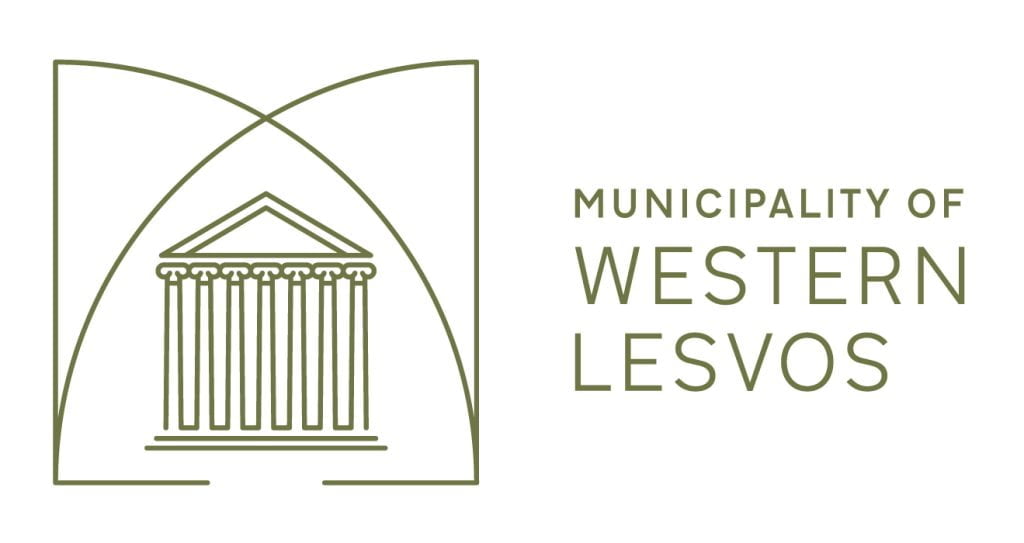Municipal Unit of Evergetoula
• The river of Evergetoula for thousands of years has fertilized the Evergetoula valley. Besides the large number of plants, reptiles, amphibians, birds and insects, the wetland in the Dipi region hosts around its estuary the seldomly-seen otter. The former municipality of Evergetoula consists of the villages Lampou Mylii, Asomatos, Ippeios, Sykounta, Kato Tritos, Mychou and Kerameia. Relics are present everywhere. Distinctive religious monuments are the Byzantine Monastery of Taxiarchis in Kato Tritos, the church of Taxiarchis in Asomatos (1796) and the church of St. Prokopios in Ippeios (1741). In Mychou, in the Fousa region there is a cave where Hellenistic statuettes and graves were found. In the Paspalas location of Lampou Mylii there is a part of the Roman Aqueduct that supplied water to Mytilini. Asomatos is an attractive mountain village with handsome houses and Agiii Anargyrii is a wonderful place with sycamore trees and running waters in a deeply shaded setting
•
Evergetoulas(Asomatos,Ippeios,Kato Tritos,Kerameia,Lampou Milii,Mychou)
• The Municipality of Evergetoula was named after the largest river on Lesvos that flows down from Mt. Olympos and ends in the Gulf of Gera. Asomatos is a village built on the foot of Mt. Olympos, established in the Middle Ages. It boasts a lusciously green location, a long history and traditional architecture that has been preserved to this day with impressive stone houses and marble fountains and of course cobblestone alleyways. The church of the Great Archangels Michael and Gabriel, a basilica type that dates back to 1796, is a “must” visit. In the churchyard there is an Ecclesiastic Museum and Folklore Exhibition which include manuscripts, coins, religious icons, liturgical vestments and various samples of traditional Asomatos crafts. Near the village of Asomatos there is the small church Agii Anargyri built in 1881, surrounded by a rich green environment full of plane, chestnut, cherry and sour cherry trees. Sitting at one of the kafeneios in these surroundings and experiencing the taste of local products accompanied with ouzo is ideal!
• Ippeios has said to have taken its name from the Greek word “ippeio” which means “mild”. This is quite logical as the settlement is quite flat…thus…Ippio! Another theory as to how the village got its name is that there used to be many horses bred there (ippos in greek means horse). Ippeios is built on one of the most fertile plains of the island, full of olive groves, vegetables and various kinds of fruit trees and is therefore of great interest in regards to botanical and zoological perspective. Α traditional village with numerous chapels, small cafes and cobblestone alleys. The church of Saint Procopios is located in the heart of the village. Built in 1741, it becomes a pole of attraction each year on the 7th July for locals on the eve of the feast of the village’s patron Saint. Celebrations continue until the early hours of the following day. If you find yourself in the area in early September, don’t miss the Ippeios Fig Festival!
• Kato Tritos is built amphitheatrically on two hills, Charakia and Boudika, which means that visiting Kato Tritos you will surely be rewarded by the panoramic view of the fertile plain of Gera. The Byzantine temple of Taxiarches which used to be a monastery until 1462 and was known by the name “Byzantine Monastery” is one of the churches that you can pay a visit during your stay. Pigadakia is the seaport of Kato Tritos with various fish tavernas. The landmark here is the chapel of St.Therapontas which was built on a small peninsula. This small church is bordered by the sea on three of its four sides, engulfed in a beautiful landscape. Don’t miss the Local Festival of Papalina held here in summer.
• In the area of Kerameia, there used to be roof-tile outlets. In Greek, the word “keramidia” means roof tiles, so there is speculation as to where the village got its name from. A three-arched bridge at the entrance of Kerameia dating back to the 13th century welcomes all visitors. The remarkable monument of the church dedicated to St. Charalampos and St. George was built in 1922 and is considered to be remnants of the great castle of “Gieremia” which datea back to the 15th century. For the celebration of St. George there is a “panigyri” – festival held with traditional music, dance and horse racing. On the way to Kerameia, you may also find the healing water from the Therma Spa in the Gulf of Gera coming out of the earth at a temperature of 39,5°C , ideal for the human body.
• Lampou Mylii is a very small village which received its name from five old water mills once present there. At Lampou Milii there is a preserved Roman Aqueduct which is the second section of the Roman Aqueduct in Moria. You can find remnants of the aqueduct after a short hike off road, just after the settlement, in the direction of Kalloni. Traditional kafeneia, are there to treat you with the most delicious mezes and local handmade specialties. There is also a 250-year-old watermill in the area of Mylelia. The main village church of Virgin Mary was erected in 1922 by refugees from Asia Minor.
• Mychou is located near the Gulf of Gera. It is a small village that was inhabited by refugees from Asia. When they came to Lesvos, they brought the icon of St. Demetrios with them, an icon which has been in this village since 1927. One main attraction of the village is the chapel of St. Ioannis which was built on the hill right next to the village and has an amazing view of the Gulf of Gera.
• If you love exploring unique caves, very close to Mychou, Fousa cave is perfect for you. This 95-meter cave boasts two beautiful chambers. It is important to note that artifacts dating back to the 6th century BC were unearthed here, which proves it played an important role in Ancient Greece.
Asomatos
| Declared a traditional settrlement, Asomatos is one of the most charming mountain villages on Lesvos known for woodcarving, its impressive marble fountains, woodcarving workshops and beautiful coffee houses | |
| The Church of Taxiarches built in 1796 and a small Ecclesiastical Museum located in its churchyard | |
| The Church of Agios Vasileios (St. Basil) built in 1769 | |
| The Environmental Education Centre located in the Primary School. |
Agioi Anargyroi
| The Chapel of Agioi Anargyroi, built in 1881 | |
| A beautiful valley with hiking routs that connect Agioi Anargyroi with Asomatos and Agiassos, lined with streams, cherry and sour cherry trees, chestnut trees and plane trees. |
Lampou Mylii
| A preserved Roman Aqueduct which you can find after a short hike off road, just after the small settlrement of Lampou Myloi, in the direction of Kalloni. | |
| Traditional Kafeneions with local handmade specialties | |
| The main village church of Virgin Mary, erected in 1922 by refugees from Asia Minor |
Ippeios and Sykounta
| Amazing olive and fig tree landscapes, with picturesque squares with traditional kafeinons. | |
| A restored watermill at the location “Mylelia” near Ippios, which dates back 250 years and still operates. | |
| The fishing village of Ntipi with old waterfron coffeehouses | |
| Wetlands of Ntipi-Larsos, with amazing flora and fauna, home to inumerous reptiles and amphibians, the rare sea otter, as well as an ideal location for birdwatching | |
| The Church of St. Procopios, located in the heart of Ippeios, built in 1741 |
Mychou
| The cave of Agios Ioannis (Fousa) where tombs of the 5th century were discovered | |
| The Chapel of Agios Ioannis with an amazing view of the Gulf of Gera | |
| The house of Kiamil Aga | |
| The Church of St. Dimitrios at the same spote where there used to be a Turkish mosque | |
| The Ottoman Fountain with an inscription on it from 1739 |
Kato Tritos
| The Byzantine Church of Taxiarchis built in the 15th Century |
Pigadakia
| Traditional fish taverns | |
| The Local Festival of Papalina held in summer |
Kerameia
| A three-arched bridge at the entrance of the village from the 13th century | |
| On the way to Kerameia, healing water from the Therma Spa in the Gulf of Gera, which comes out of the earth at a temperature of 39.5 C, ideal for the human body. | |
| The remarkable monument of the church dedicated to St. Charalampos and St. George, built in 1922. It is considered to be remnants of the great castle of “Gieremia” which dates back to the 15th century. | |
| The Celebration of St. George with traditional greek music, dance and horse racing. |









